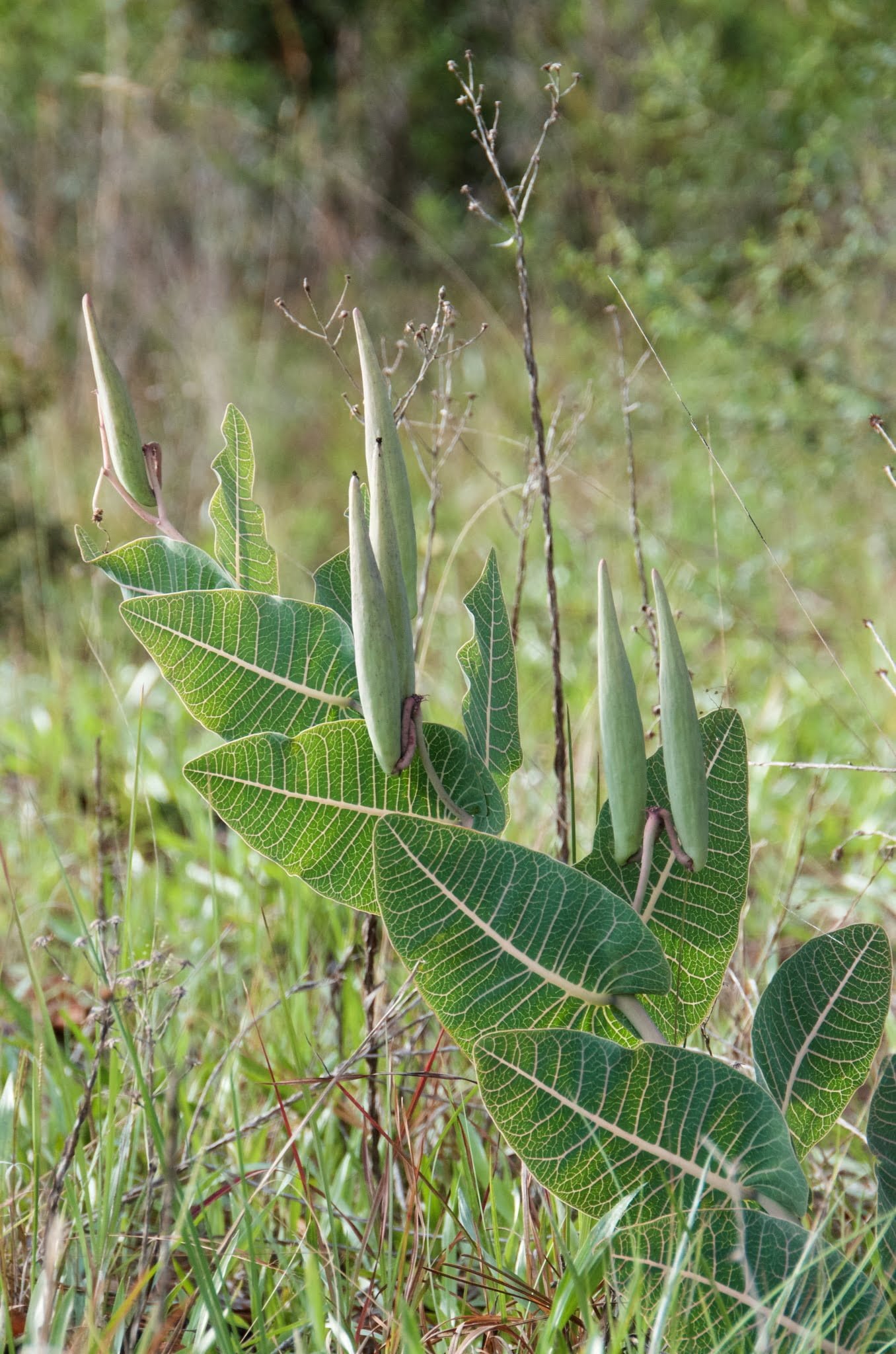Sandhill Milkweed (also known as Pinewoods Milkweed, Sprawling Milkweed, or Pink-Veined Milkweed) is a species of Milkweed plant native to the Southeastern United States.
Milkweed species are required by the endangered Monarch Butterfly (Danaus plexippus).
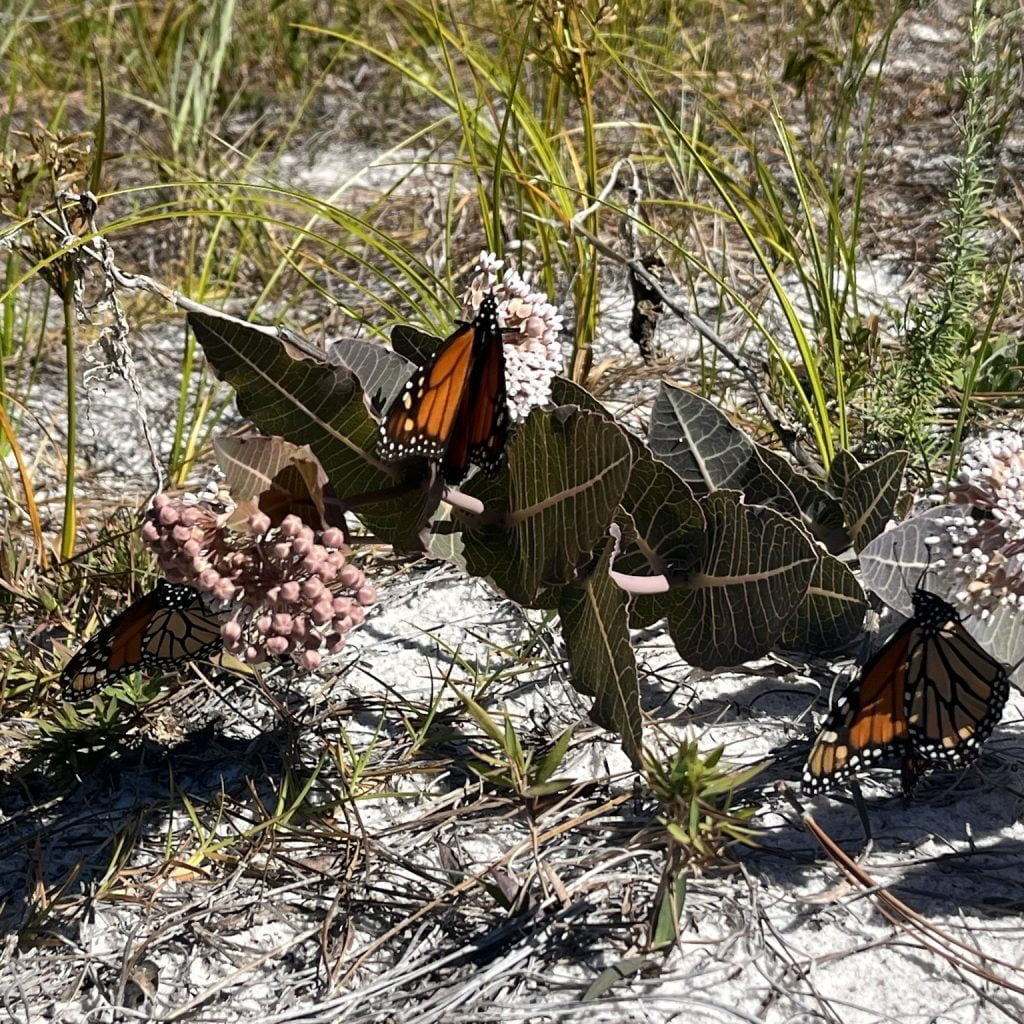
Its scientific name is Asclepias humistrata, which is made of the Latin humis, or “sprawling,” and sternere, which means “to spread.” Therefore, it would be just as well to call Asclepias humstrata ‘Sprawling Milkweed’ or more completely, ‘The Milkweed that spreads by sprawling.”
Ecology
Pinewoods Milkweed is found in dry, scrubby uplands that feature exceptionally well-drained, sandy soil. The plants are found in, and around, the Gulf States, i.e. Texas, the Carolinas, Florida, Alabama, and Georgia. Louisiana is generally too wet for Sandhill Milkweed, but it can occur in sandy, dry areas.
Pink-Veined Milkweed establishes strong taproots, which allow the plant to reappear in the same place each year.
The number of branches generally indicates the age of a Sandhill Milkweed; the more branches, the older it is. A good estimate is one decade per branch. Clearly, a Pinewoods Milkweed with five or six branches is decades old.3
It was originally named Pinewoods Milkweed because it was found in the savanna-like ecology of the southeastern United States before Longleaf Pine were nearly exterminated in the early 1900s.
Today, Sandhill Milkweed is found on sandhills which offer full exposure to the sun. It can only be found in natural areas, devoid of non-native turf grasses and other invasive species. It will only grow in areas of open sand, which are often burned and/or disturbed.
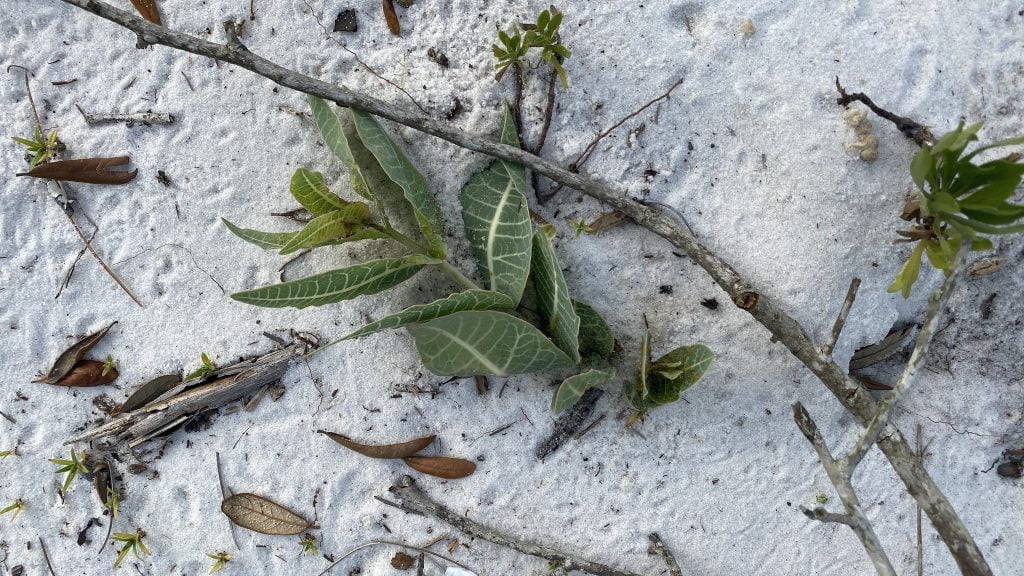
Pinewoods Milkweed can be found growing near the endangered Longleaf Pine, as well as Slash Pine and Sand Pine. Any Pinus species that generate patches of fire are prime areas for Sandhill Milkweed.
While it would seem that scrub and running oaks would choke out Sandhill Milkweed, it does not, probably due to the taproot that the oaks lack. Further, scrub oaks offer shade in an otherwise extremely harsh, scrub environment.
Pink-Veined Milkweed are easily choked out by non-native species; especially Cogongrass, Bermudagrass, or any sod or turf grass meant to dominate the landscape. Sod grass is and was never native to the Lake Wales Ridge, especially St. Augustine Grass. The only native grasses live in bunches.
Sandhill Milkweed is also wiped out (extirpated) in every neighborhood development which clears the entire subdivision. This practice should be illegal.
Sandhill
We aren’t kidding about the sandhill part.
Sandhill Milkweed need a hill made of sand. The good news is, you can easily create your own sandhill. It doesn’t matter how big or small the sandhill is. Just start importing sand into your yard.
If you are already in a native area for Sandhill Milkweed, it should be pretty easy to grow. Louisiana is generally too wet for Pinewoods Milkweed, but it might occur in scrubby, dry, sandy areas. If you already have 100% sand in your yard, you are half way there. You can simply dig a hole for a pond, and scoop the sand into a little hill. Now you have a microsandhill ready for Sandhill Milkweed Seeds.
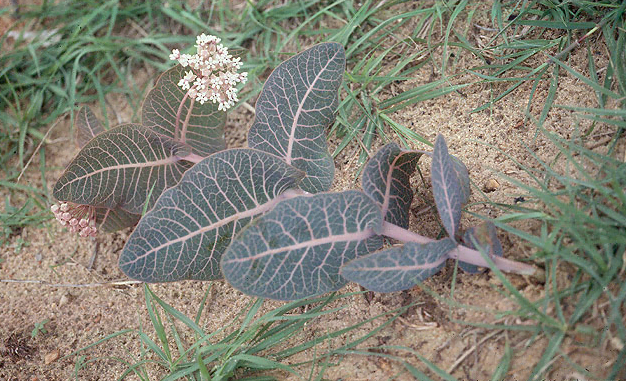
Sand
We really aren’t kidding about the sand part. Loamy, rich, peaty, moist, black soil will kill your Sandhill Milkweed sooner rather than later. It really wants sand alone. A sand salad, hold the lettuce. Your Pinewoods Milkweed truly wants sand.
Imagine huge, sandy dunes sloping towards a beach bathed in the afternoon sun, light shimmering off the water. This is exactly where Sandhill Milkweed want to live, but you don’t need the beach or the water.
If you can create a habitat of at least 2, maybe 3 feet of sand, and create as much sun as Florida can produce, and offer that sun at least 12 hours a day, you can grow Sandhill Milkweed.
Propagation
For the safest, easiest propagation, simply cast Sandhill Milkweed Seeds onto pure sand. Improve propagation chances by placing 1/4″ deep in sand using tweezers. Water daily until established, at least two months. Over-seed the area at least once per year, if not more often. Weed out unwanted grasses.
For a higher success rate, at higher costs and higher risk of crop loss, indoor propagation methods do work. Jiffy Pots are 100% peat, but allow enough aeration for germination and to establish the first few leaves. These can be planted into a real or synthetic sandhill. They can even be planted into a pot filled with Play Sand and be a container plant on a bright patio. Its amazing how much abuse they can take; they must be at least 50% cactus. Still, the little seedling might die if the Jiffy Pot dries out too much. Also, after planting, we have had opossums eat the Jiffy Pot peat and accidentally kill the Sandhill Milkweeds in the process.
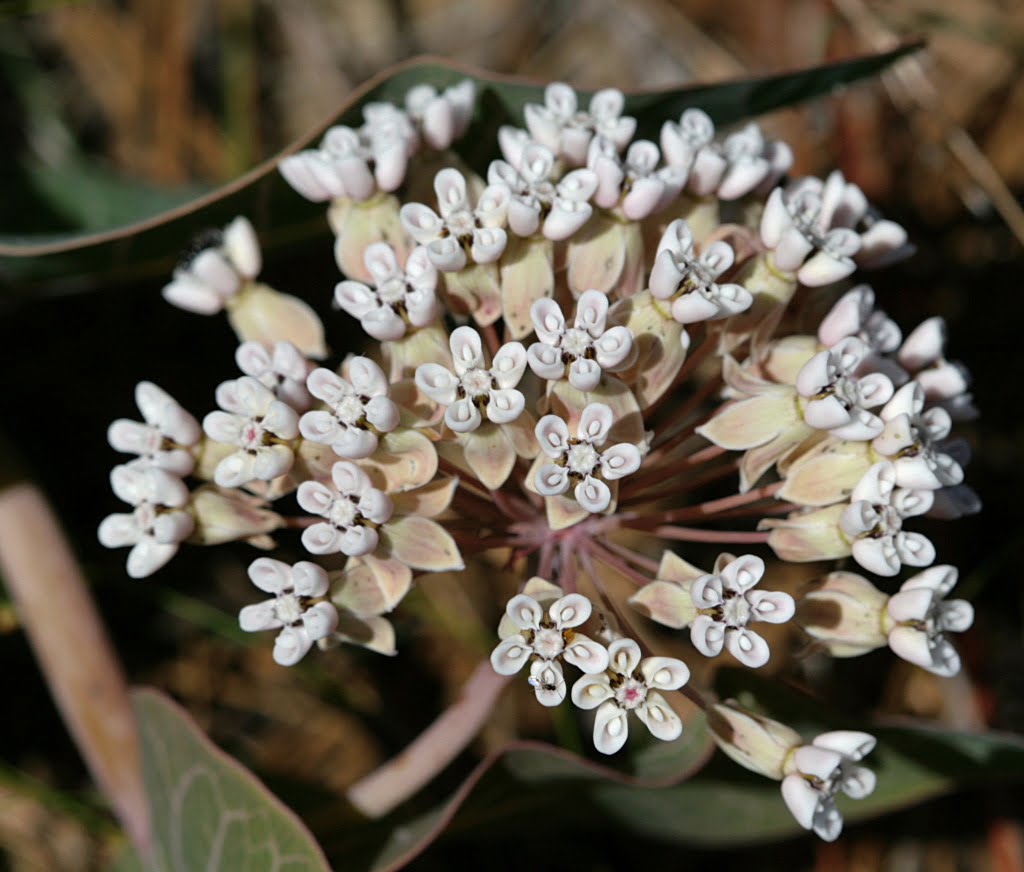
20 Florida-Native Sandhill Milkweed Seeds Ascslepias Humistrata Pinewood Milkweed
With Johnny Butterflyseed’s Sandhill Milkweed seeds, you’re not just planting flowers; you’re cultivating a living mosaic of nature’s marvels. Florida Native.
Be aware, Sandhill Milkweed only appears for spring and summer and is dormant the rest of the year. But it is a spectacular flowering plant, and required by the endangered Monarch Butterfly.
Endangered
While not itself endangered, the ecology that is required by Sandhill Milkweed is certainly very endangered. Further, the Monarch Butterfly is endangered, and those depend on Milkweed to live. Longleaf Pine, which originally helped gibe this Milkweed its name, are also endangered.
Please help Johnny Plant More Milkweed. Then we will see Sandhill Milkweed, Monarch Butterflies, and all of the Lake Wales Ridge thrive… one day at a time!
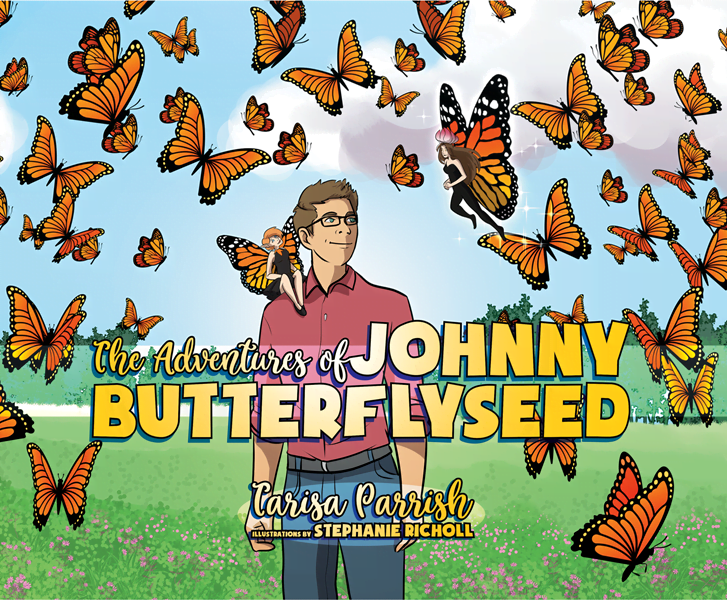
The Adventures of Johnny Butterflyseed – Author Signed First Edition Children’s Book
Save the monarchs!
Johnny Butterflyseed and his fairy friend, Raven Silverwing, embark on a mission to save the rapidly disappearing butterflies. They enlist the help of Queen Venus Goldwing and her kingdom of monarchs to educate and inspire kids to become butterfly farmers. At first, Johnny faces his own internal struggle with self-doubt and fear in his ability to make a difference, but then soon develops a mindset that allows him to not only get started, but also make progress one day at a time. Through challenge after challenge, Johnny learns that he is not alone in his mission and that there are many people who want to help. Together, Johnny, Raven, and Queen Venus educate thousands of children on becoming butterfly farmers.
